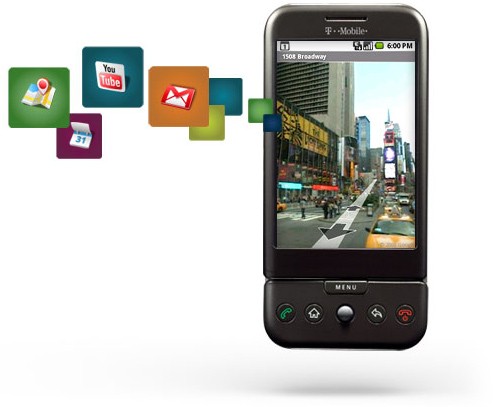 I kind of felt like I was cheating on my wife — in this case an iPhone — when I checked out the new Google phone the other day at a T-Mobile store. I must admit I was seduced.
I kind of felt like I was cheating on my wife — in this case an iPhone — when I checked out the new Google phone the other day at a T-Mobile store. I must admit I was seduced.
After more than a year of writing about the so-called Google phone and the Android mobile operating system, I actually held one in my hands. The G1, as it is known, called to me. It wasn’t as poorly manufactured as I feared it might be; its display was bright, crisp and intoxicating; its operating system seemed fun and promising.
At first blush, I was smitten. But as in any relationship, the more time you spend with someone — or in this case something — the more you learn.
What I learned about the G1 I’m sharing with you. Like the wise Om Malik, I prefer a less formal review format because there are many fine reviewers out there who’ve been testing the G1 for weeks. Like Uncle Walt from the Wall Street Journal. Or David Pogue at The New York Times. And all the usual gadget and mobile blogs.
I tend to focus on the user experience of any product, which in this case is important as the G1’s chief competitor, Apple’s iPhone, seemingly has cornered the market on usability and consumer imagination. Since the release of the iPhone 3G in July, Apple has sold nearly seven million phones this quarter.
For the so-called Google phone to reach that kind of success, it must complete with Apple on the user experience battlefield, not just over features and functions. This will be harder for the G1 because it has three parents, not one like the iPhone.
There’s Google, developer of Android.
There’s HTC, the manufacturer.
And there’s T-Mobile, the carrier.
In the near future, other manufacturers and carriers will be involved with the development of Google phones. All of them will provide different interpretations of Android with new features and functions and user experiences. Will they rival that of the iPhone? Or will they become another, albeit solid, contender?
Continue reading »
 Much of the iPod’s success,
Much of the iPod’s success, 



 In case you haven’t heard, T-Mobile announced the world’s first — and for the time being, only — cell phone powered by Google’s open-source, mobile operating system today amid much pomp and circumstance.
In case you haven’t heard, T-Mobile announced the world’s first — and for the time being, only — cell phone powered by Google’s open-source, mobile operating system today amid much pomp and circumstance.


